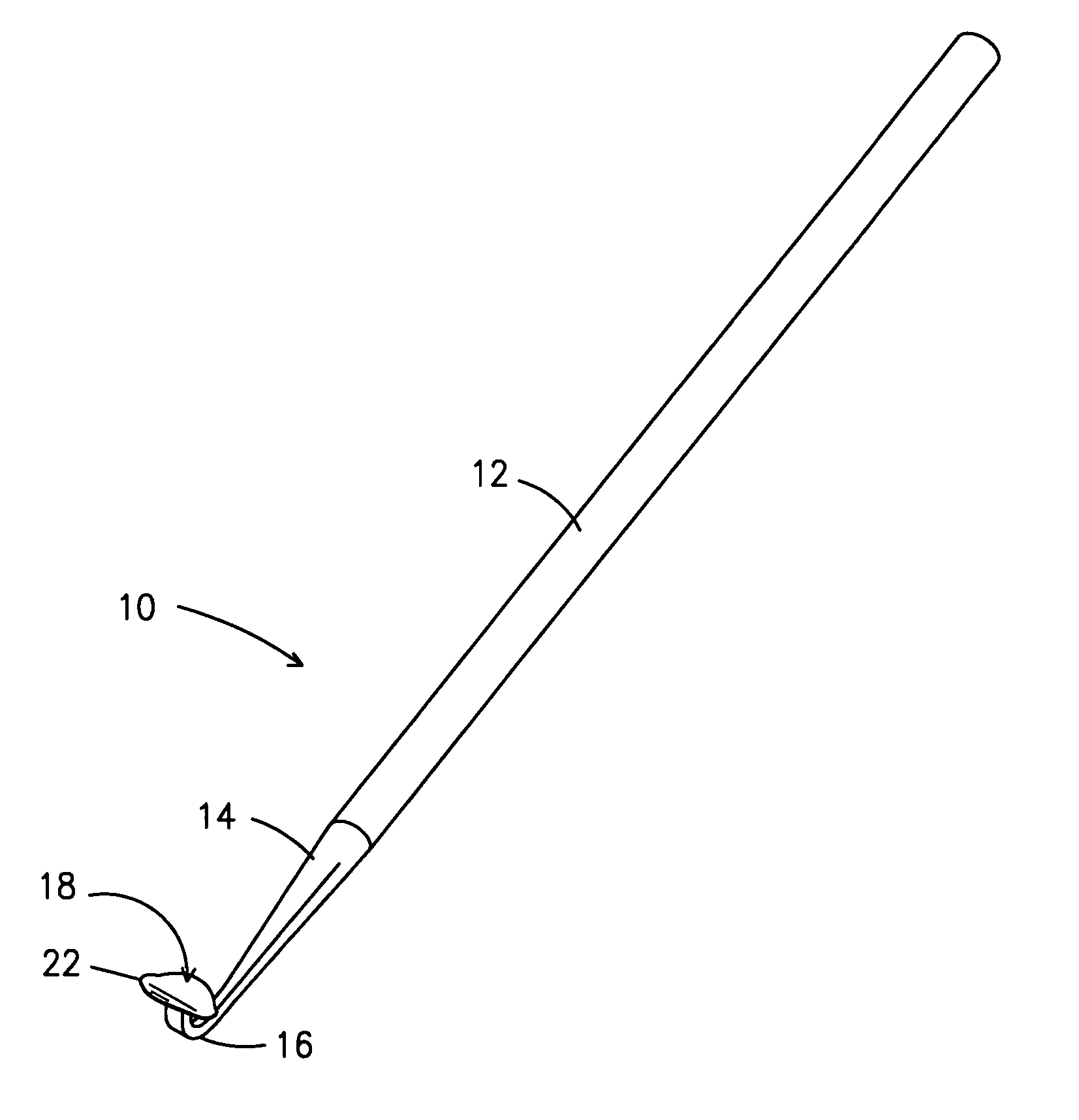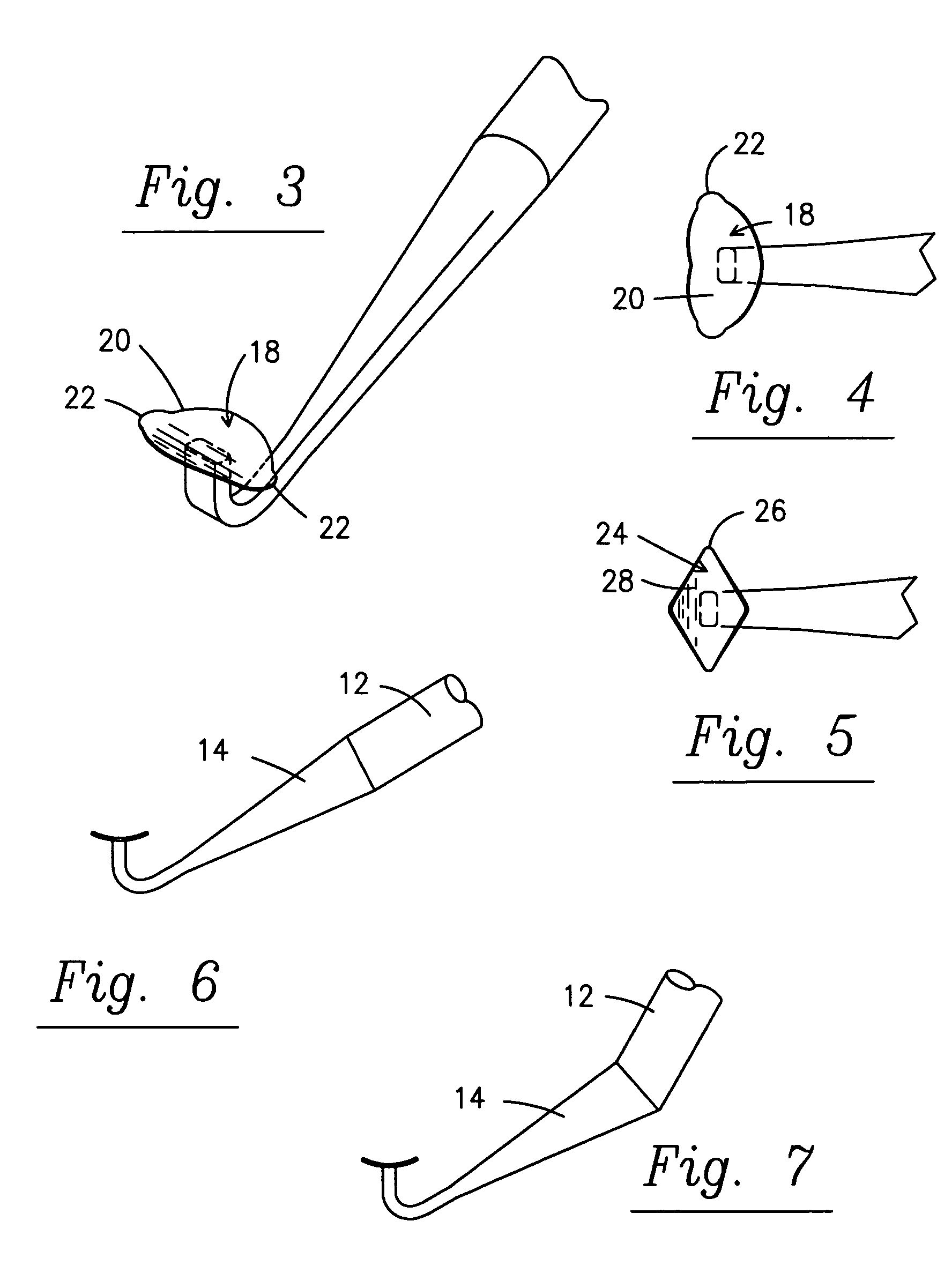Gingival tissue retractor
a tissue retractor and gingival technology, applied in the field of tissue retractors, can solve the problems of insufficient wideness of instruments wide enough to adequately retract larger segments of tissue from the central groove, insufficient wideness to adequately retract remaining obstructing tissues, and difficult banding of molars and premolars, etc., to achieve the effect of convenient cleaning, convenient manufacturing, and convenient cleaning
- Summary
- Abstract
- Description
- Claims
- Application Information
AI Technical Summary
Benefits of technology
Problems solved by technology
Method used
Image
Examples
Embodiment Construction
[0031]A gingival tissue retraction tool is shown generally at 10 in FIG. 1 and is comprised of an elongated shaft 12 having a secondary end portion 14 terminating in a J-shaped curve 16 for supporting a working end 18. As can best be seen in FIG. 2, in the preferred embodiment of the invention, the working end 18 is generally curved, preferably oval in shape, with the long axis of the oval working end arranged generally perpendicular to the axis of the shaft 12. Additionally, if desired, the working end 18 of FIG. 1 can be angled with respect to the axis of the shaft. With this orientation, the apices 20 of the oval working end extend laterally from the shaft to provide working surfaces, as will be described later.
[0032]In the enlarged view of FIG. 3 it will be noted that each apex 20 of the oval working end 18 is provided with a small projection 22 that is convex and forms a leading edge working surface that is much narrower than the apex 20 of the working end 18. Thus, the apex 20...
PUM
 Login to View More
Login to View More Abstract
Description
Claims
Application Information
 Login to View More
Login to View More - R&D
- Intellectual Property
- Life Sciences
- Materials
- Tech Scout
- Unparalleled Data Quality
- Higher Quality Content
- 60% Fewer Hallucinations
Browse by: Latest US Patents, China's latest patents, Technical Efficacy Thesaurus, Application Domain, Technology Topic, Popular Technical Reports.
© 2025 PatSnap. All rights reserved.Legal|Privacy policy|Modern Slavery Act Transparency Statement|Sitemap|About US| Contact US: help@patsnap.com



